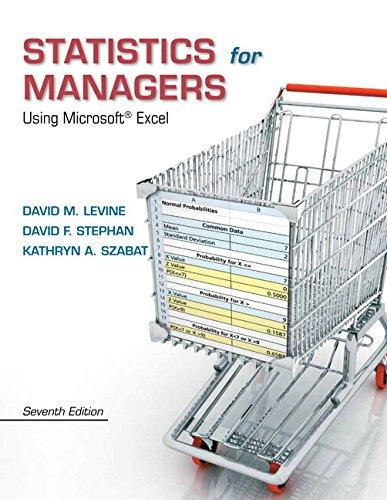A freshly brewed shot of espresso has three distinct components: the heart, body, and crema. The separation
Question:
a. Use the least-squares method to develop a simple regression equation with Time as the dependent variable and Tamp as the independent variable.
b. Predict the separation time for a tamp distance of 0.50 inch.
c. Plot the residuals versus the time order of experimentation. Are there any noticeable patterns?
d. Compute the Durbin-Watson statistic. At the 0.05 level of significance, is there evidence of positive autocorrelation among the residuals?
e. Based on the results of (c) and (d), is there reason to question the validity of the model?
Fantastic news! We've Found the answer you've been seeking!
Step by Step Answer:
Related Book For 

Statistics For Managers Using Microsoft Excel
ISBN: 772
7th Edition
Authors: David M. Levine, David F. Stephan, Kathryn A. Szabat
Question Posted:





